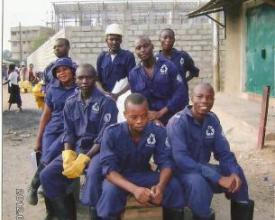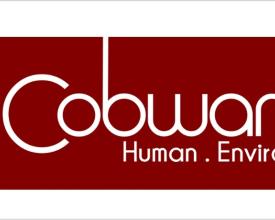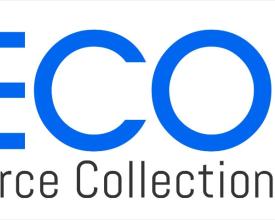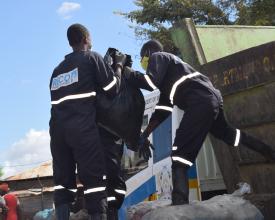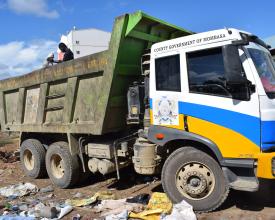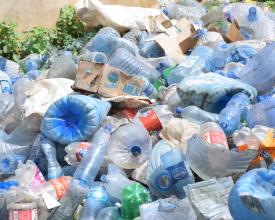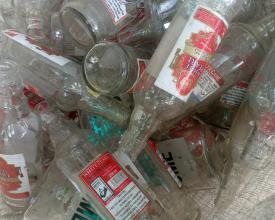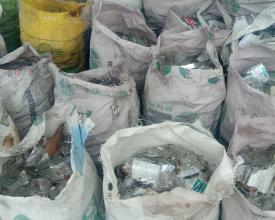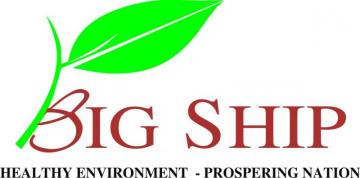
Modèle communautaire de gestion des déchets (COBWAMM)
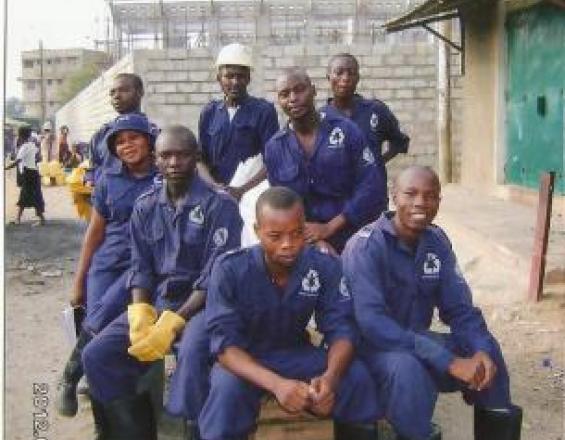
Le modèle de gestion communautaire des déchets (COBWAMM) est une entreprise sociale dirigée par des jeunes et inspirée par l'organisation Big Ship. Sa mission est de "fournir un service de gestion des déchets fiable, abordable et efficace et de valoriser les déchets riches en ressources afin de promouvoir des communautés saines et de protéger les ressources naturelles".
COBWAMM a deux stratégies :
- Collecte des ressources (RECO) - Il s'agit d'un modèle de franchise qui simplifie les opérations de gestion des déchets solides pour les citadins pauvres, en mettant l'accent sur l'aide aux femmes et aux jeunes ;
- Installation de récupération des matériaux (MAREFA) - Il s'agit d'un modèle de valorisation des déchets riches en ressources afin d'améliorer les moyens de subsistance.
Afin d'augmenter le taux de collecte des déchets, en particulier dans les quartiers à faibles revenus et à forte densité de population, des efforts sont déployés pour trier et générer des revenus à partir des matériaux à la source.
Contexte
Défis à relever
Défis à relever
- Absence de services de collecte des déchets adéquats et abordables
- Pollution de l'environnement
- Absence de culture du tri à la source
- Mauvaises pratiques de gestion des déchets solides dans les centres urbains et les quartiers densément peuplés du comté de Mombasa.
- Faiblesse de la fonction de recherche et développement (R&D) qui limite l'innovation verte et l'esprit d'entreprise dans le secteur grâce à des méthodes innovantes de collecte, de récupération et de réorientation des déchets.
- Une mauvaise élimination des déchets dans le comté et la pression qui en résulte sur les écosystèmes marins, notamment la pollution par les plastiques et les déchets solides dans les criques de mangrove.
Emplacement
Traiter
Résumé du processus
Collecte primaire
- Cartographie des zones de collecte des déchets.
- Cartographie SIG réalisée progressivement pour déterminer les zones de collecte des déchets qui ont un potentiel pour les services.
Transfert/transport
- COBWAMM fait appel à l'Autorité nationale de gestion de l'environnement (NEMA) pour s'assurer que les zones de stockage des déchets sont soigneusement évaluées et contrôlées afin de limiter toute atteinte à l'environnement.
Tri et séparation des déchets
- Les producteurs de déchets ont l'avantage de réduire le coût des services de collecte des déchets en triant les matériaux à la source.
- COBWAMM a mis en place des stations de rachat pour acheter les matériaux récupérés à toute personne désireuse de les vendre.
Blocs de construction
Zonage des quartiers de collecte des déchets
- Zonage des zones/quartiers potentiels nécessitant des services de collecte des déchets.
- Identification et recrutement de franchisés potentiels dans les zones prioritaires.
- Stimulation de la demande.
- Relier le franchisé à la zone de prestation de services en lui fournissant une formation, des outils et des équipements.
Facteurs favorables
- Mise à disposition de la marque au franchisé.
- Fourniture d'outils et d'équipements au franchisé.
- Formation et sensibilisation du franchisé.
- Amélioration de l'accès au marché pour la fourniture de services de gestion des déchets.
Leçon apprise
- Le concept de la franchise dans son ensemble est essentiel lors de la mise en place d'une innovation qui implique la vente de modèles de franchise.
- L'ambiguïté des lois empêche de nombreux jeunes et femmes de s'abonner à la prestation de services.
- L'état d'esprit des jeunes et des femmes à l'égard de la fourniture de services de collecte des déchets crée un obstacle à l'abonnement.
- S'en remettre au gouvernement du comté pour assurer l'enlèvement des déchets ne fonctionne pas.
Ressources
Installation de récupération des matériaux (MAREFA)
Une installation de récupération des matériaux (MAREFA) est un espace qui reçoit, trie, traite et stocke des matériaux recyclables destinés à être expédiés et commercialisés auprès d'utilisateurs finaux. Le MAREFA accepte les matériaux, qu'ils soient séparés à la source ou mélangés, et les trie, les traite et les stocke en vue d'une utilisation ultérieure comme matières premières pour la refabrication et le retraitement. La fonction principale du MAREFA est de maximiser la récupération des ressources tout en produisant des matériaux qui généreront les revenus les plus élevés possibles sur le marché. Le MAREFA a également pour fonction de transformer les déchets en matière première pour la conversion biologique ou en source de combustible pour la production d'énergie. MAREFA sert d'étape de traitement intermédiaire entre la collecte de matériaux recyclables auprès des producteurs de déchets et la vente de matériaux recyclables sur les marchés en vue de leur utilisation dans la fabrication de nouveaux produits. MAREFA se compose essentiellement de quatre éléments : le tri, le traitement, le stockage et le chargement. MAREFA est une entreprise privée gérée par COBWAMM.
Facteurs favorables
- l'augmentation de la consommation et de la production humaines résultant de l'évolution des modes de vie
- Augmentation du volume et de la variété des articles à récupérer sur les marchés, en remontant la chaîne de valeur du recyclage et de la fabrication.
- Augmentation de la demande par rapport à l'offre de "produits récupérables" sur le marché du travail
- Croissance de la population en raison de l'urbanisation rapide
Leçon apprise
- Il est important de comprendre la demande par rapport à l'offre dans la chaîne de valeur de la gestion des déchets.
- L'efficacité de l'installation dépend de la qualité des ressources humaines et des outils de manutention à l'intérieur de l'installation.
- La sensibilisation des producteurs à l'importance du tri à la source est essentielle.
- Le plastique a des effets néfastes sur l'environnement et doit donc être récupéré, mais cela n'est pas toujours rentable (il vaut mieux trier à la source).
- Conseil à toute personne souhaitant créer un MAREFA : faites en sorte qu'il soit axé sur le marché !
Des services à la clientèle efficaces
Un service clientèle efficace est assuré par le développement d'un système de paiement en ligne et d'une application mobile adaptée au service clientèle (actuellement en cours de développement). Ces mesures permettent aux clients d'interagir avec le service, de soumettre des demandes, des requêtes et des paiements et même de rechercher les services de la chaîne de valeur à venir.
Facteurs favorables
L'existence d'un système de paiement mobile et d'une application de service à la clientèle permet aux clients et aux autres acteurs d'interagir avec les prestataires de services en leur fournissant des informations précieuses sur les types de services qu'ils demandent, ce qui accroît l'efficacité de la prestation de services.
La communauté que nous servons est urbaine et la tendance est à la possession d'un smartphone et à l'accès à l'internet.
Leçon apprise
La prestation de services par le biais d'applications mobiles permet de transmettre facilement des informations aux utilisateurs. Cela a permis de sensibiliser les communautés aux bonnes pratiques de gestion des déchets.
La majorité de la communauté que nous voulons servir connaît le système de paiement mobile au Kenya et, par conséquent, le texte mobile (USSD) a contribué à faciliter les services là où les smartphones ne pouvaient pas atteindre.
Certains jeunes et femmes que nous visons pour souscrire au modèle de franchise de la collecte des déchets sont timides sur le plan technologique et ont besoin d'être encouragés.
Cadre juridique de la gouvernance des déchets
Le projet se réfère et s'aligne sur le cadre juridique pertinent, ce qui permet d'influencer et de persuader plus facilement les clients actuels et potentiels. L'existence d'un cadre juridique du comté sur la gouvernance des déchets est essentielle à la réussite du projet.
La stratégie nationale de gestion des déchets solides définit les objectifs nationaux en matière de gestion des déchets et est également importante pour le projet.
Facteurs favorables
Existence d'une structure de gouvernance des déchets comprenant la stratégie nationale de gestion des déchets solides et le projet de loi national sur la gestion durable des déchets, 2019. Il s'agit d'outils importants pour la mise en œuvre du projet de gestion des déchets, car ils permettent de régulariser et d'organiser tous les acteurs de la chaîne de valeur des déchets.
Leçon apprise
Le rôle du gouvernement dans la gestion des déchets est essentiel et se manifeste par des politiques et des projets de loi qui se sont avérés être le modèle et le point de référence pour les acteurs du secteur.
Il existe toutefois un problème de chevauchement des politiques qui peut entraîner des charges et des taxes élevées dans le secteur des déchets.
Impacts
- Faciliter la collecte efficace des déchets résidentiels, en particulier dans les quartiers peuplés et à faibles revenus.
- Fourni une formation innovante sur l'entreprenariat, y compris sur la manière de créer et de gérer des entreprises sociales.
- Développement de réseaux d'acteurs privés et publics dans le domaine des déchets.
- Amélioration de l'état de l'environnement, des possibilités d'emploi et du niveau de vie des citadins pauvres, notamment des jeunes, des femmes et des personnes handicapées.
Bénéficiaires
- 1,3 million de résidents du comté de Mombasa grâce à un environnement plus propre et plus sain
- Des jeunes et des femmes assurés de moyens de subsistance durables
- Gouvernement du comté de Mombasa
- Les ramasseurs d'ordures, les éboueurs informels et formels du secteur
Objectifs de développement durable
Histoire
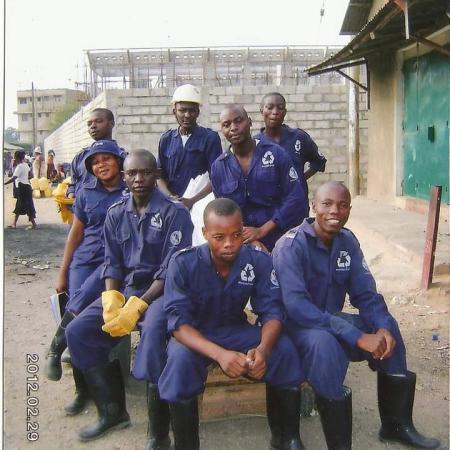
Nous sommes en 2009. Ma priorité est de survivre et de servir ma communauté. Jeune et énergique, tout juste sorti du lycée, je n'ai pas trouvé mieux que d'aider à sauver ma communauté de la noyade dans les déchets illégaux tout en luttant contre un taux de chômage élevé. Avec des jeunes partageant les mêmes idées, j'ai décidé de tenter ma chance et je me suis rapidement retrouvé à la tête d'une organisation communautaire. Notre histoire a non seulement incité d'autres jeunes à suivre nos traces, mais elle a aussi fourni aux principaux partenaires un miroir pour réfléchir à ce que pourraient devenir des personnes comme nous si on leur donnait l'occasion, dans un environnement propice, d'exercer leurs talents, leurs compétences et leurs connaissances dans un monde en perpétuel défi. Aujourd'hui, je ne suis pas seulement directeur, mais j'ai réussi à rendre à ma communauté ce qu'elle m'a donné en facilitant le développement d'entreprises sociales qui apportent des solutions à des problèmes réels en temps réel.

